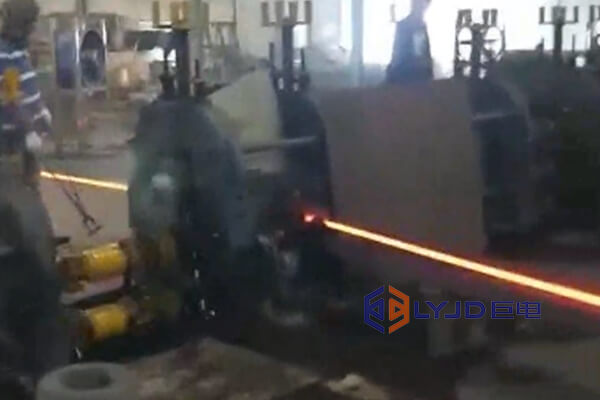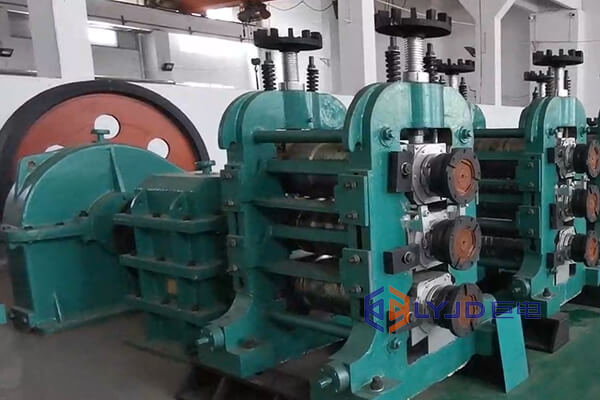Rolling temperature and rolling speed are important parameters for the steel rolling machine. And, there is a mutual influence and restriction relationship between them.
The rolling temperature has a significant impact on the rolling process. When the rolling temperature is low, the deformation resistance of the metal increases, and the rolling force increases, which can easily lead to roll wear or even breakage. As the rolling temperature increases, the deformation resistance of the metal gradually decreases and the rolling force decreases, which is beneficial to the rolling process. However, excessive rolling temperatures may cause oxidation and thermal damage to the metal, affecting product quality and performance. Therefore, choosing the appropriate rolling temperature is crucial to obtaining high-quality rolled products.

The rolling speed also has an important impact on the rolling process. When the rolling speed is low, the deformation time of the metal is longer and the rolling force is larger. As the rolling speed increases, the deformation time of the metal shortens and the rolling force decreases. However, an excessively high rolling speed may cause the metal to be unable to complete uniform deformation in a short time, resulting in a decrease in the surface quality of the product. Therefore, choosing the appropriate rolling speed is also an important factor in obtaining high-quality rolled products.
It is the key to ensuring the quality and production efficiency of rolled products. The following are some methods to coordinate the rolling temperature and rolling speed of the rolling mill.
First, you need to understand the characteristics of the material to be rolled, such as thermal conductivity, thermal expansion coefficient, etc. These characteristics will influence temperature and speed changes during rolling and help determine appropriate parameter ranges.
Set a reasonable rolling temperature according to the characteristics of the rolling material and product requirements. Too high a temperature may cause material overheating, oxidation, or thermal damage, while too low a temperature may cause increased rolling force, uneven rolling, or poor surface quality of the rolled material. Therefore, it is necessary to adjust the rolling temperature according to the actual situation and keep the temperature stable.
After setting a reasonable rolling temperature, select the appropriate rolling speed. A speed that is too low may result in insufficient rolling or substandard performance of the rolled material, while a speed that is too high may result in the material being unable to complete uniform deformation in a short period, affecting product quality. Therefore, the rolling speed needs to be reasonably selected and optimized based on material characteristics and equipment conditions.
By adjusting the cooling method and time between rolling passes and passes, the temperature and speed changes during the rolling process can be controlled. By increasing or decreasing the number of passes and selecting appropriate cooling methods, the temperature and deformation of the material between passes can be controlled, thereby coordinating the matching of rolling temperature and speed.
Install temperature and speed sensors on the rolling mill to monitor the temperature and speed changes of the rolled material in real time. By monitoring the data, the rolling temperature and speed can be adjusted in time to ensure a stable state throughout the rolling process.
By optimizing rolling mill equipment and process parameters, the stability and controllability of the rolling process can be improved. For example, improving the roll design, adjusting the hydraulic system parameters, improving the lubrication system, etc. can coordinate the matching of rolling temperature and speed.

In actual production, continuous experimentation and adjustment are effective methods to coordinate rolling temperature and speed. Observe and record changes in product performance and quality by experimenting with the effects of different parameter combinations. Based on the experimental results, the best parameter combination is selected and optimized to achieve the best coordination effect.
In actual production, we need to coordinate the rolling temperature and rolling speed reasonably according to the specific rolling materials, product requirements, and equipment conditions. In some advanced rolling mills, the rolling temperature can be precisely controlled by controlling the heating and cooling systems, thereby affecting changes in rolling force. At the same time, the rolling speed can be controlled by adjusting the transmission system and motor parameters of the rolling mill, thereby optimizing the parameter matching of the entire rolling process.
In short, rolling temperature and rolling speed are important parameters that influence and restrict each other. To obtain high-quality rolled products, it is necessary to comprehensively consider the effects of these two factors. Only by optimizing parameter matching and control methods, can we improve product quality and production efficiency
Please send us your request and we reply to you with in 24 hours.
Submit Request